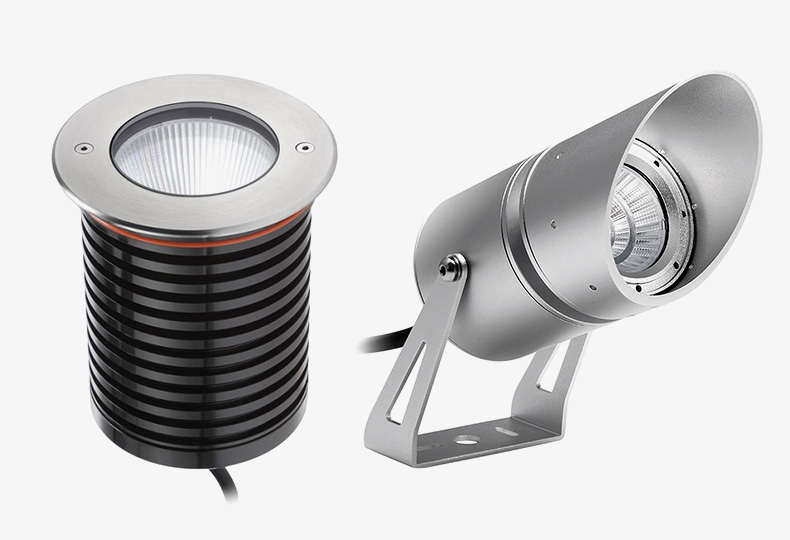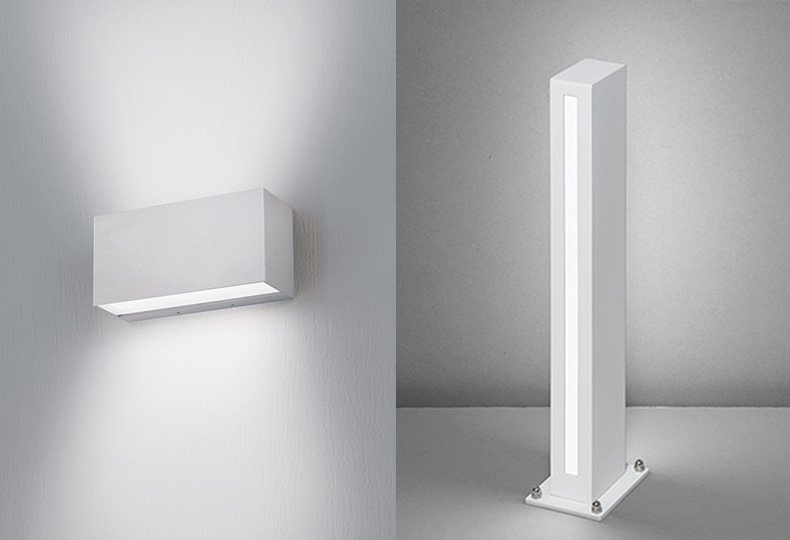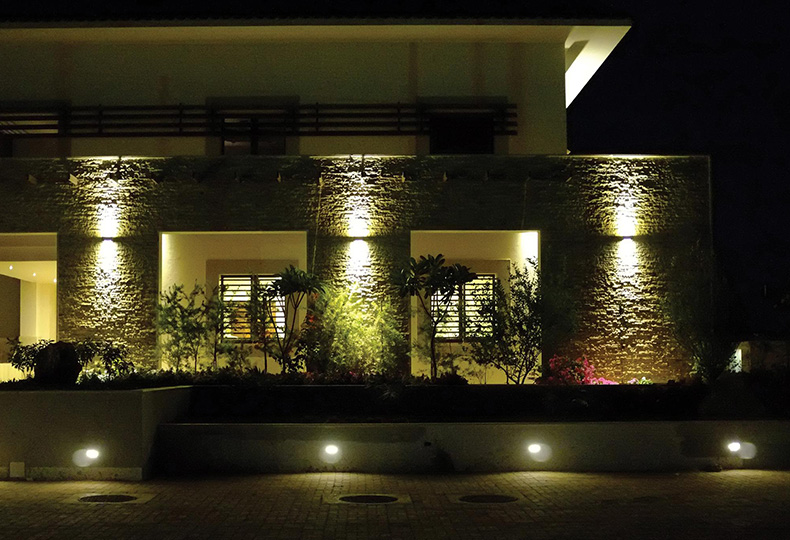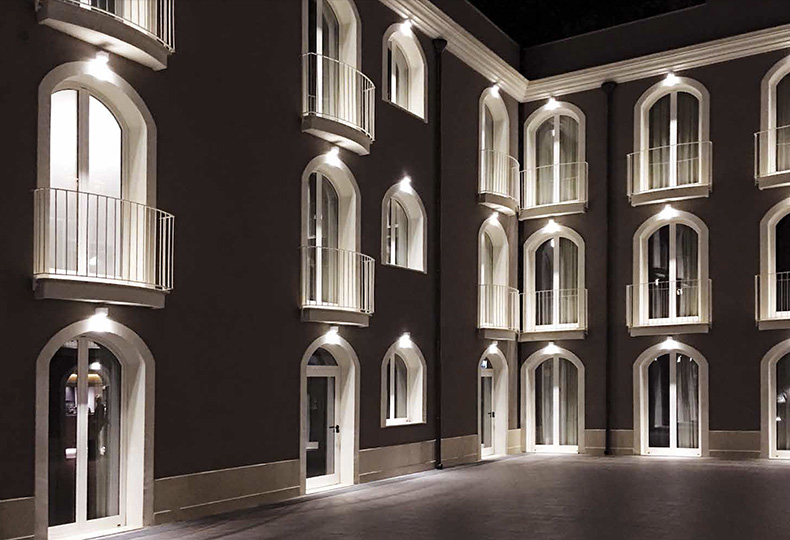
Façade Lighting: Rules, Mistakes and Examples
Façade lighting is a highly important task, since the light should not just integrate into the architectural solution of building, but also match with the surrounding territory. Thus, in case of private house the lighting of building façade and the lighting of adjacent land lot must contemplate and integrate with each other, while if we consider an example of a public venue, the perfect lighting solution must comply with the applicable regulatory standards and the general municipal lighting concept.
Development of new LED technology has significantly facilitated the process of working with light, which is even more beneficial in the specific case of facade lighting. The modern Outdoor lamps are usually almost indistinguishable from surrounding, so the visible is only the light itself, rather than its source. At the same time, such lighting equipment should be resistant to adverse weather, reliable, durable and waterproof, so in this field the technical considerations outweigh the decorative and aesthetic factors. Nobile Italia SpA, Italian lighting equipment manufacturer with more than 25 years on the market, offers LED lighting solutions not only for interiors lighting of office, retail, restaurant, bar and residential premises, but also for outdoor lighting. The company’s mission is not just develop a product, but to forge innovations, since all the lighting solutions are designed by the Rome-based corporate research and development unit and are sold with 5 years warranty.
The company’s product range includes light sources for architectural lighting of building and installations, as well as the landscape lighting solution. The lighting fixtures of each type are available in the number of different models, where such diversity of outdoor architectural lighting solutions is explained by the numerous available lighting techniques, the choice of which is primary determined by an architect’s task, as well as conditional and regulatory standards applicable to the specific project.
outdoor lamps, Nobile Italia SpA
Nobile Italia SpA’s projectors area available in ground-mounted, wall-mounted and ceiling-mounted versions. The devices generate bright direct light with adjustable beam thanks to the movable dome. Such luminaries made of stainless steel and resistant to the aggressive weather conditions are supplied in the range of various sizes and shapes.
In-build luminaries may be mounted directly into soil or integrated in the tile, wall, ceiling or even the swimming pool sides. Such solutions are usually used for navigation purpose to light, for example, the a staircase by burying the light sources in the stairs.
The suspension lamps are intended for wall or ceiling mounting. The ceiling-mounted luminaries usually have rounded or square shapes are generate soft diffused light. The wall-mounted models are represented by LED lamps with single beam or two-directional beam that simultaneously covers the area below and above the device (like in case of the Brick model).
Besides that, the company’s product portfolio also includes tubular lighting columns that can be used for lighting of drive-ways, access roads or other similar applications. These luminaries use two-directional lighting technology. Thanks to their reserved design, these devices do not catch the eye, while simultaneously generating enough light for their intended application.
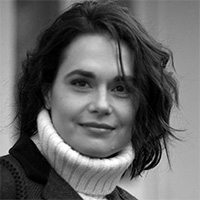 Julia Zharkova Director of Lighting Design Bureau "Culture of Light"
Julia Zharkova Director of Lighting Design Bureau "Culture of Light"
How to start work on the lighting of the facade
In order to create proper lighting, the light must integrate into the building architecture. If the project involves previously constructed building or facility, we start with studying its history: who was the architect, what are the specific architectural features, what was the building’s initial intended purpose? On the other hand, if we deal with the new construction project, then we discuss the building’s architectural concept with its architect, including its specific traits and functional purpose (business center, residential house, sport complex, et cetera). Then it is important to examine the design object at site: we usually consider such factors as the building’s location, its surrounding, whether it is an architectural dominant of the area or is supposed to be integrated into surrounding real estate environment. We also pay special attention to the surrounding environment itself, including solutions utilized for street and architectural lighting in the nearby area, since the lit facility must properly integrate into the city environment.
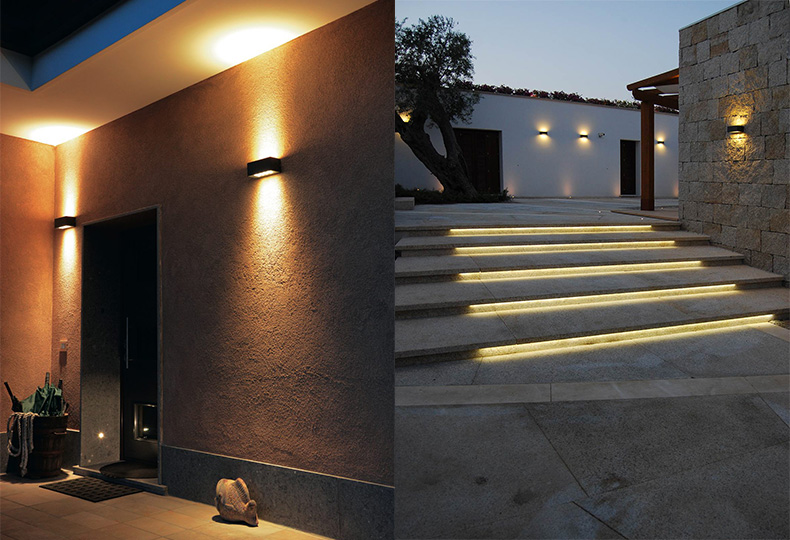
The facade of a private residence, lighting by Nobile Italia SpA. The architects used Brick wall lights with bi-directional radiation. To illuminate the stairs they used built-in led lamps.
How does the approach to the design of the facade depend on the characteristics of the building (private house or public space)
The public facilities are subject regulatory lighting standard to be complied with. The lighting façade brightness cannot exceed the minimum and maximum specification limited. Moreover, architectural lighting project must be agreed with municipal authorities (in case of Moscow these are the Moscow City Architecture Committee for general facilities and the Moscow City Cultural Heritage Committee for historic landmarks) in terms of its artistic expression, regulatory standard compliance and general city lighting concept.
Lighting of buildings must be integrated into the surrounding urban environment, where the lighting should not create discomfort for pedestrians or cause distraction to drivers.
In case of private residence, the task is both easier and harder at the same time. It is easier because there no rigorous regulations and standard, but more complicated since such legislative regulations are replaced with the tastes and preferences of the customer, In the city setting, a person walks by the lit building and pay attention to lighting only if it is distracting or annoying. On the other hand, a private residence and adjacent land lot are the place, where the owner is supposed to spend a considerable portion of its life, enjoy the rest and communicate with family, so the lighting here is responsible for creating the atmosphere and the climate around the house. From the architectural perspective, the house lighting should represent the identity of the owner.

groung mounted two-directional lighting columns, Nobile Italia SpA.
What factors should be considered and what aspects should be given special attention
When designing architectural lighting, it is essential to consider the lighting solutions of surrounding real estate facilities and municipal street lighting in the area, in order to smoothly integrate our own solution into the general lighting environment. When choosing the lighting techniques and light sources, especially façade-mounted decorative luminaries, we also have to consider the architectural style, in which is building is constructed. When choosing the color temperature of the light source, it is necessary to take into account façade finishing materials, so the resulting light does not distort the visual perception of façade color. The refractory properties of material (whether it is dull, reflective or glossy) significantly affect the final perception of lighting. You also have to keep in mind that certain lighting techniques are extremely good to emphasize the quality of façade finishing, especially when it comes to the plasterwork.
Then, it is crucial to examine the facade design and technical documents, as well as the electric wiring diagram of the building to make sure that the selected lighting techniques may be practically implemented. Here you have to give considerations to how the power cables will be laid to and between the lamps, how to make inserts for brackets, where to install lighting control cabinet, which power is designated to the architectural lighting system, et cetera.
And the most important in lighting design is to find the idea that matches the concept of the project. so the lighting would become an integral part of the architecture.

The facade of the W hotel les Trois Rocs (Verbier, Switzerland), illuminated by colored lamps. Spotlights and recessed luminaires by Nobile Italia SpA come with colored LEDs (RGB LED).
What are the common mistakes made by designers when planning the facade lighting
Probably, the most common mistake is designing the lighting solution without careful consideration of factors we already discussed above. For example, incorrect of lighting design on the narrow street without consideration of surrounding street lighting environment may lead to a result, where the real lighting picture at the first or second floor level may not match the initial concept at all, since instead of soft cold light accents on the partition walls we will see only blight warm spectrum spots from street lights breaking out from the general architectural rhythm of façade.
Another common mistake is over-reliance on the computer simulation software without verifying your solution in the field setting or experimenting with various luminaries by different manufacturers on the real façade. In general, the earlier a light designer joins the construction project, the better and the more beautiful the real-life implementation of the architectural lighting solution will be instead of existing only on a pretty digital drawing.
In my experience, the more successful architectural lighting project are those implemented in close cooperation with the team of architects.
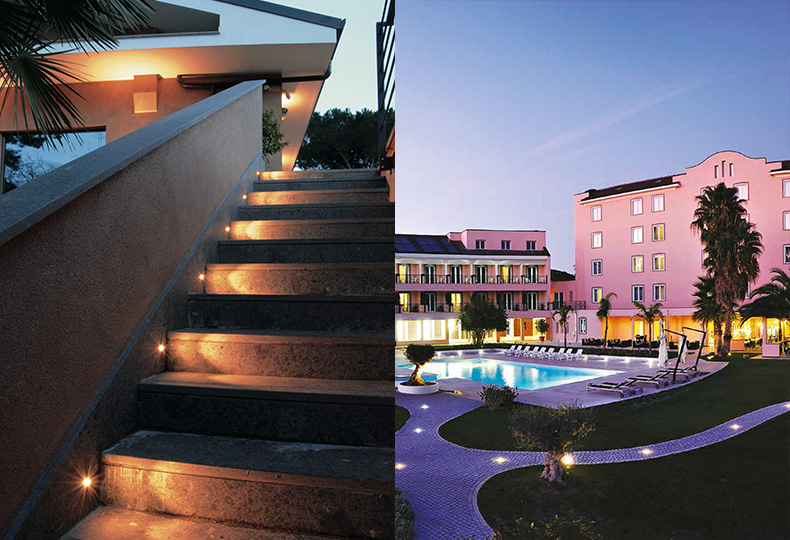
Left – the stairs, lit built-in lights by Nobile Italia SpA is on the right track, and pool, also illuminated Nobile Italia SpA.
In Russia Nobile Italia SpA is represented by Archistudio.
